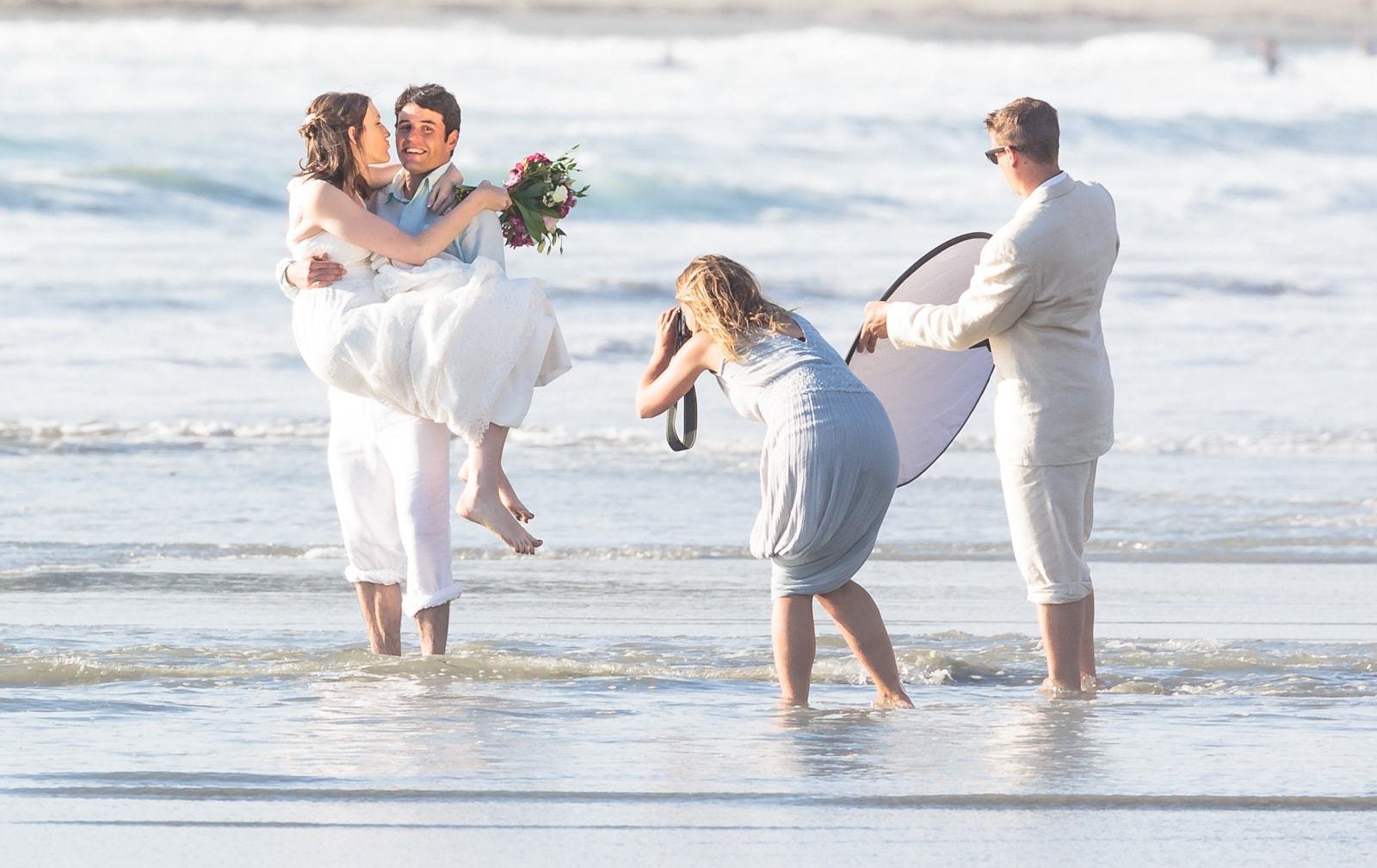Today I bring you a most interesting photographic accessory . Diffusers and reflectors for photography. If you usually drop by the blog, you will know that we are not very supporters of large equipment nor do we recommend the most expensive cameras. We are of the opinion that the camera does not make the photographer, you will have read it many times in the different articles. Indeed, we think so. Not by having a better camera or better equipment will you be a better photographer. Yes you will be if you master lighting in photography, for this, you have everything you need to know in this guide, information, tips and tricks. Obviously, if you dedicate yourself to photography professionally, this aspect is somewhat more important, although it will surely not be the case ?
Now, just because having super equipment and all the accessories in the world won't make you a better photographer doesn't mean that using certain gadgets won't help, and I'm not referring to the expensive ones. Sometimes we get scared by some terms, or we limit ourselves to our camera because we can't make big investments, or we just get so excited about our first camera that we just stand there and don't take another step. Has it happened to you?
KEY LIGHTING ACCESSORIES
What you should know, whether you have just landed in this world or have been around for a while, is the importance of light in photography. Controlling the lighting is crucial when it comes to achieving a good photograph. This does not mean that you have to have a super lighting studio, in fact, thinking about this is something that stops us when it comes to taking small steps when it comes to expanding the equipment in terms of light accessories. Sometimes it is simply a matter of having the key accessories, those that can get you out of more than one bind and that also have an almost ridiculous cost.
Today I am going to talk to you specifically about two of them, reflectors and diffusers, what they are, what they are for and where to find them. Knowing them will mark a before and after in your photography ? I assure you. And I don't tell you anything in portrait photography .
REFLECTORS
Some people think that reflectors are a thing for professionals or photography geeks. Nothing is further from reality. They are not very discreet, yes, and there is no self-respecting professional who does not use them. Does that mean that a hobbyist or beginner shouldn't aim for them? Not at all, its use is very simple, its cost is very affordable and the results are immediate. I'm going to introduce them to you "Hello, reader here, reflector here..." hehe, I'm kidding ?
WHAT IS A REFLECTOR?
A reflector, as you can imagine, is any object that serves to reflect light and fill in shadows. It serves to achieve balance between light and darkness and function as a second light when there is none. And when I say "any object" it is because although there are reflectors made specifically for it, if you do not have them at hand you can use any other material that reflects light as an improvisation, for example, a white cardboard, a white wall or even a tetra brik can serve as a silver reflector for small motifs.
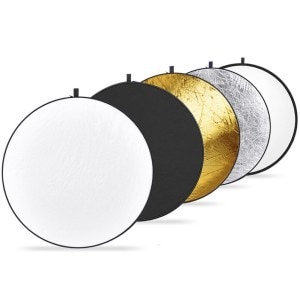
5 IN 1 SPOTLIGHT
The best known is the 5-in-1 reflector, which consists of a flexible ring with different mating surfaces:
- White. It bounces light gently and does not change the color temperature.
- Black. In this case, more than reflecting, what it does is absorb excess light and intensify shadows.
- Golden. Bounces light providing a warmer tone.
- silver. The silver reflector bounces more light than the white one and, like the white one, does not change the color temperature.
- Diffuser. The disc to which these four reflectors are attached is translucent and will serve as a diffuser (we will talk about diffusers later).
To give you an idea of the effect of the different reflectors, here is a very explanatory diagram:
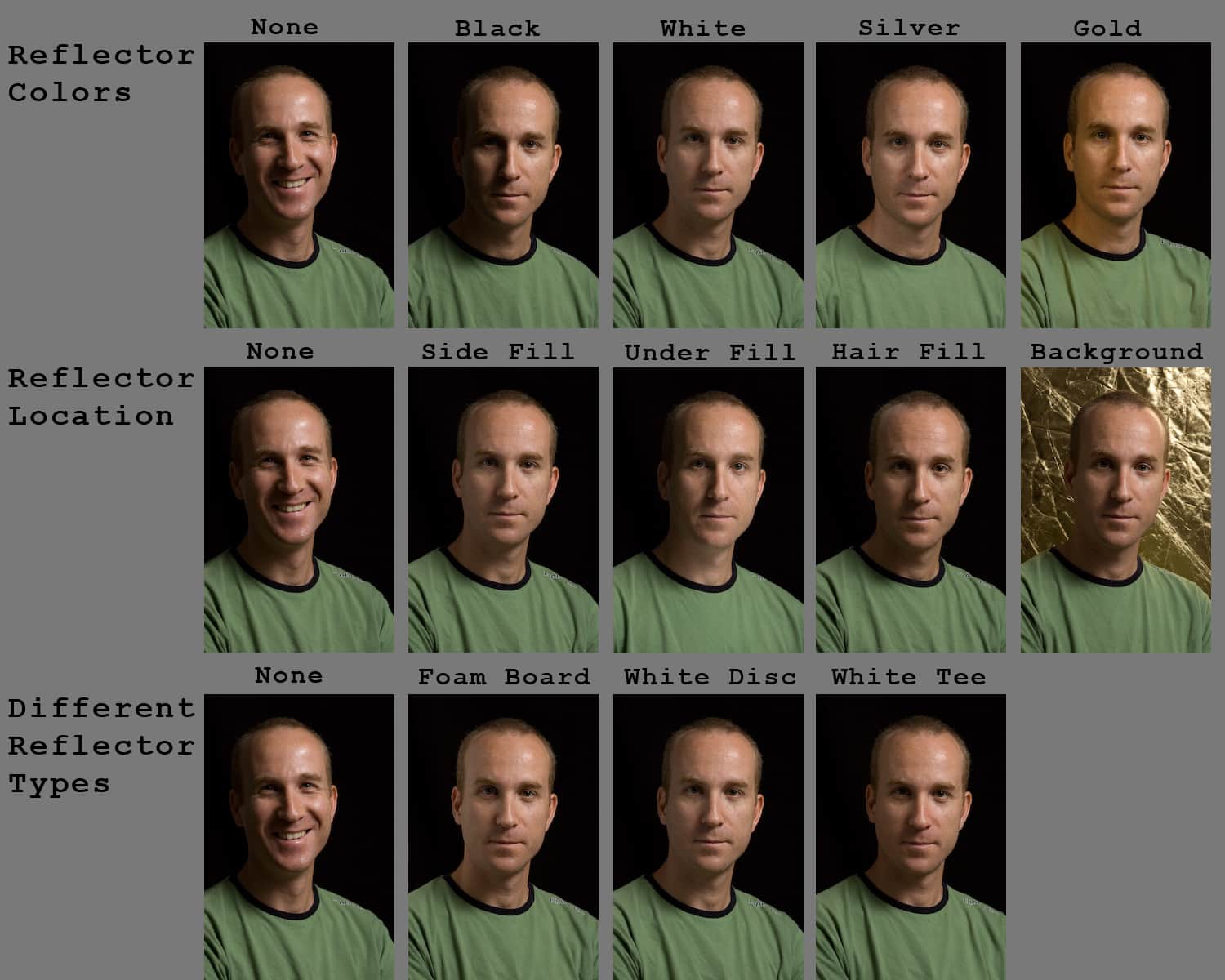
Take a look at this video to see how the reflector works (you don't even have to listen to it ? ).
I'm talking about discs, because the best known or most commonly seen are those with a round shape, although you can also find them with a rectangular shape .and triangle. There are also different sizes, smaller and larger depending on the needs of each one. You can find them on Amazon from 19 euros for 60 cmin diameter or 18 euros for 110 cms.A very small investment for what it offers, don't you think?
OTHER TYPES OF REFLECTORS
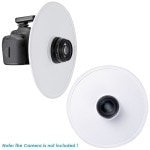
1. Round reflector. Small circular reflector for when the light comes from behind the subject. It has a white and a silver surface and folds up.
2. Reflective panel. For more advanced users or professional use. They are reversible panels with support that rotates 360 degrees to use horizontally and vertically. And we are already talking about other prices, they are around 90 euros(I already warned that it was for more advanced or professional users ? )
3. Umbrella reflector. Umbrellas are used to diffuse the light and also to reflect it, like this one that costs about 17 eurosand it's silver and black.
4. For advanced. Especially if you are a portrait lover and want to go one step further, you have to know the beauty dish. Ideal to highlight the beauty of your models.
Drawbacks
Unless you have a stand to attach the reflector to, you will most likely need a kind soul to act as a helper.
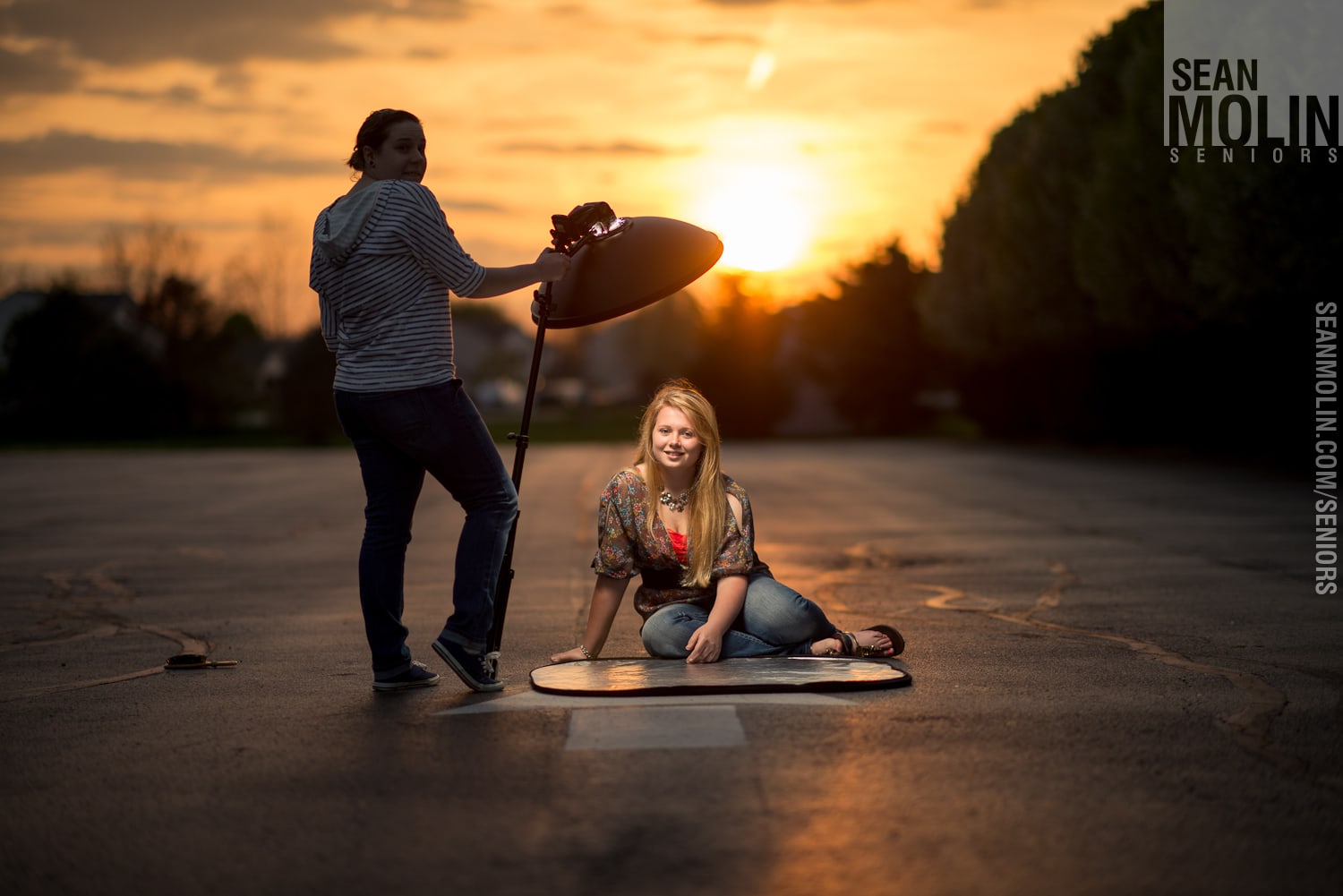
cheats
- For small surfaces you can use pieces of mirrors , although be careful because they can reflect light very hard, it can be a good exercise to practice and play with them for a while to see the effects and possible results ?
- Use white clothing so that it reflects the light on the subject you are going to photograph, especially if you are going to photograph closely.
- An aluminum foil on a cardboard can serve as a silver reflector.
- Do not limit yourself to its usual use, in addition to filling in the shadows, you can use the reflector to enhance or increase the brightness in light areas.
DIFFUSERS
Unlike the reflectors that I have just presented to you, a diffuser will allow you to diffuse the light, or what is the same, soften it. In this article I explained the difference between hard light and diffused light, in case you're not sure what I'm talking about when I say soft or diffused light. And if you're short of time, I'll put an image, in a blink you'll see the difference.
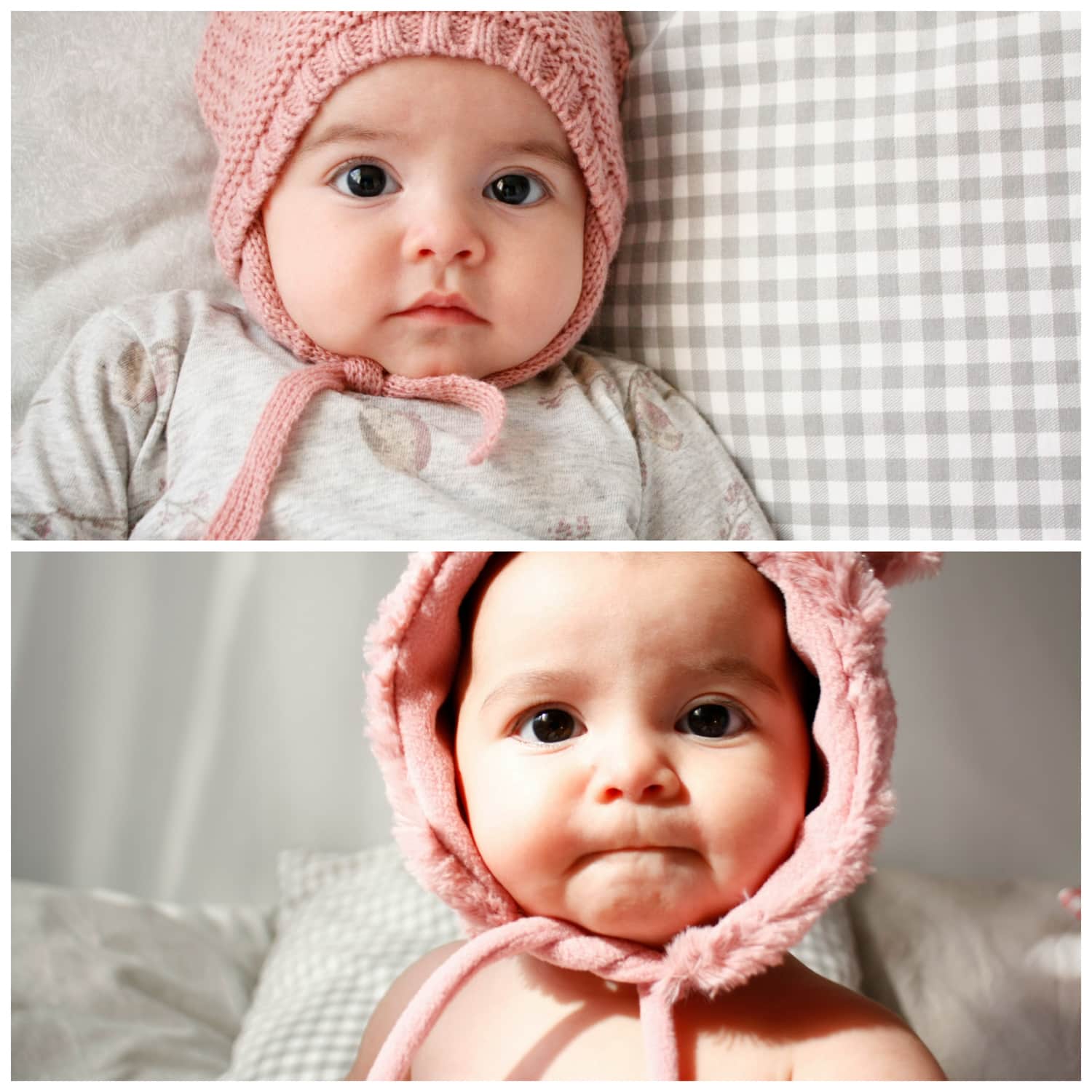
The difference between one and the other (besides the hat and the clothes ? ) is that in the image above a white tissue paper has been placed on the glass to diffuse the sunlight that fell directly on the window. Well, that's a diffuser. In this case a simple tissue paper. There is also the 5-in-1 diffuser that I have presented to you before with reflectors and other professional diffusers, such as umbrellas .or others for the flashes that we will see now. Also, you can make your own diffusers with a translucent material and some support (if you want to avoid looking for a helper ? ) depending on your needs.
Flash diffusers
There are different types of diffusers to use with the handheld flash and obtain more natural results. Flash light is usually quite harsh and can give aggressive results. (I'm not talking about the built-in flash because we never recommend it, but if you use it, at least put something similar to this ? )
oh!!! That you don't have a flash yet? And you have not thought about buying one? Here you have a great guide to help you in such an arduous task ;P Here are the different types:
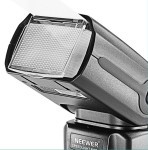
1. Tab type: it is usually incorporated into any handheld flash and unless you need all the power of the flash because you are at a considerable distance from the subject, it is better to use it if you are not going to use another flash or bounce the light. The result will be smoother and more natural.
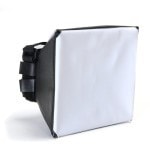
2. Window diffuser. It makes the effect of light windows but in a tiny size. It's not worth 3 eurillos on Amazon. You also have them in a larger size for study, such as this one.
3. Box type diffuser. It 's a plastic boxthat snaps into the flash. Nor does it reach the euro. As you will see, the investment is not excessively important ? and to take portraits with flash it will be essential for you.
4. Strobella type diffuser. For short distances. It is a mini umbrella, somewhat bulkier than the others but its larger surface area makes it more appropriate for closer shots. Unlike the window, which emits light only from the front, the umbrella, due to its shape, lets light escape in all directions.
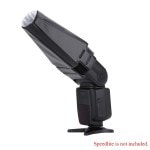
5. Double diffuser. this diffuserIt has two faces, one white for a softer light and the other silver for greater range. And it costs less than two euros!
6. Collapsible diffuser. For product photography or the most creative shots.
ONE LAST PIECE OF ADVICE (OR TWO)
If you think that these "gadgets" are expensive, you can not miss the article in which my partner Iaio tells you how you can make some of them for very little money.
In closing, I would like to give you the last piece of advice. These accessories won't do you any good if you don't use them. Let me explain, even if you keep the theory today, if you don't put it into practice soon you will forget about it. If you don't do some test (even at home with a white cardboard, a piece of aluminum foil or white tissue paper) and check the effects, this article will evaporate in your brain among so much information that you receive daily, and you and I will have wasted time. We don't want that, do we? Well, come on, practice!!!

